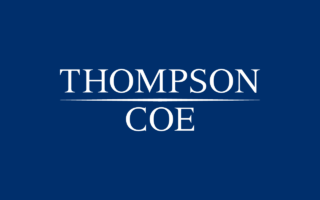Vague Facts as to Date of Occurrence or Damage May Trigger Multiple Policies
Sep 1, 2006
On July 18, 2006, the Dallas Court of Appeals issued an opinion in Summit Custom Homes v. Great American Lloyds Ins. Co., 2006 Tex. App. LEXIS 6143 (Tex. App. — Dallas, no pet.) reaffirming its holding in Gehan Homes, Ltd. that an insurer’s policy is triggered — and an insurer owes a duty to defend — if it cannot conclusively establish through the “eight corners” rule that the loss did not occur during the policy period. As a result, a plaintiff may plead vague or no facts regarding the date of “occurrence” or damage and successfully trigger multiple policies.
In Gehan Homes, Ltd., the plaintiff home buyers filed suit against Gehan alleging defective construction of their residence. See Gehan Homes, Ltd. v. Employers Mut. Cas. Co., 146 S.W.3d 833 (Tex. App. — Dallas 2004, pet. filed). In their petition, however, the plaintiffs failed to specify when the damage occurred. In liberally construing the plaintiffs’ pleadings against Gehan, the court concluded Employers could not establish as a matter of law that there was no allegation of a potential occurrence within the policy period. See id. at 844.
Similarly, in Summit Custom Homes, the plaintiff home buyers alleged their home was constructed in 1996, and that they had since suffered property damage, without specifying the dates of damage. See Summit Custom Homes, 2006 Tex. App. LEXIS 6143. Great American had issued general liability policies to Summit, effective January 15, 1996 to January 15, 2000. In their petition, the plaintiffs alleged:
Each and every claim made by the plaintiffs herein is subject to the discovery rule because the defects of which plaintiffs complain were latent and/or otherwise undiscoverable. The defects caused damage within the wall cavity which is not readily apparent to one examining the exterior of the EIFS surface. As a result, the named plaintiffs would not, in the exercise of reasonable diligence, immediately perceive, or discover the defects complained of herein.
Great American argued that because the plaintiffs pleaded the discovery rule, in effect stating they only discovered the defects within the applicable statute of limitations, which would have been around 2000 and suit was filed in 2003, the plaintiffs could not have discovered damage in 1996 and within the earliest policy period. See id. The court, however, applied the “eights corners” rule, finding it could not determine if the 1996-2000 policies applied, and held that Great American failed to establish as a matter of law that the damages did not manifest during 1996 or anytime before 2000. See id.
Great American also argued the damages must have occurred in 2003 or 2004 when the petition or third-party petitions were filed. The court held that this argument also overlooked the fact that, according to the facts in the pleading, although vague, damage could have manifested earlier. See id. In essence, the plaintiffs had triggered each of Great American’s policies for purposes of its duty to defend.
The Texas Supreme Court recently reaffirmed the “eight corners” rule and rejected the use of extrinsic evidence showing a loss occurred outside the policy period. See GuideOne Elite Ins. Co. v. Fielder Road Baptist Church, 49 Tex.Sup.J. 87 (Tex. 2006) and related article (Duty to Defend Could Be Triggered by Extrinsic Evidence). Therefore, this holding, in conjunction with the Summit Custom Homes decision, requires insurers confronted with vague pleadings regarding dates of loss to potentially defend under each implicated policy.







